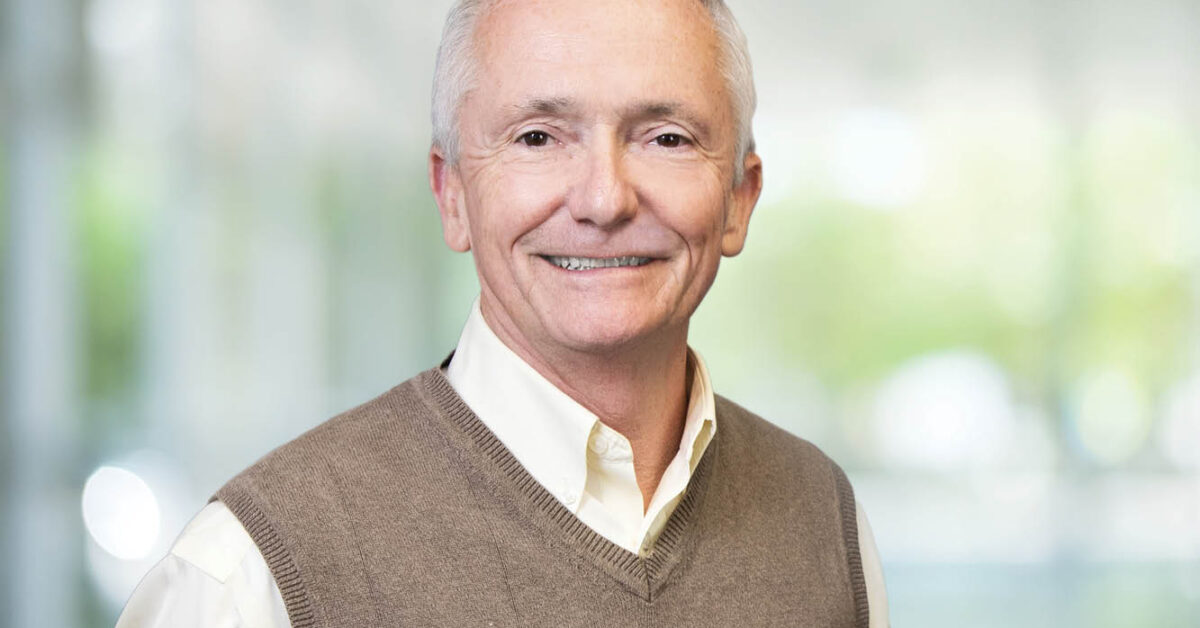
Retirement Planning
February 2022
The ACE Factor
March 2022Jim Rock
by Christine Fisher
Jim Rock and local industry are synonymous. Even though he is from Alabama and has been known to yell “Roll Tide” during football season, we try not to hold that against him. He has more than proven his love for the Bayou State given the many years he has chosen to make Southwest Louisiana his home.
Site manager, vice president and executive director are just a few of the hats Rock has worn during his illustrious career in industry. He gives Thrive an update on how he’s putting his knowledge of industry to work in his current role as executive director with Lake Area Industry Alliance.
Describe your career path in industry.
I graduated from the University of Alabama in 1977 with a bachelor’s degree in mechanical engineering. After graduation, I moved from Alabama to Lake Charles to work for PPG Industries.
For 32 years, I worked in a variety of roles of growing responsibility in the departments of maintenance, engineering, operations and EHS (environment, health and safety) at the plant here in Lake Charles.
I then accepted a transfer and promotion to become the site manager in the PPG plant in West Virginia. Seven years (and seven winters) later, I returned to Lake Charles as the site manager of the Axiall North and South plants. About a year and a half later, I was assigned to the role of vice president of operational excellence for Axiall and a few months after that, was offered the position of executive director of Lotte Chemical for their new facility in Westlake.
What led to your decision to be the executive director of LAIA after the retirement of Larry DeRoussel?
Many years prior to returning to Lake Charles, I had actually thought about what a great job LAIA would be after retiring from a full-time job in industry. I was elated when Larry called to say he was interested in retiring and his job would become available. At that time, I had worked for 42 years in a variety of roles in the chemical industry including nine years as a site manager and was ready to slow down. I saw this as a way to continue to contribute to industry and the community while having more personal time. I became the executive director of LAIA in November 2019. By the way, I’m still waiting to slow down!
What do you see as LAIA’s role within the community?
LAIA is the communication liaison between local industries and the community, civic leaders, elected officials, educators, and non-profit organizations. We educate those groups on issues affecting business, industry, and trade. We provide factual information to the community regarding industrial operations that could affect residents, and we work with local education leaders from elementary school to college level to enhance the education systems to meet the present and future needs of the industrial community.
How does LAIA work with local industries?
LAIA is multi-faceted with the overall goal of bringing industry together to enhance Southwest Louisiana. We currently have 22 members of local industries as members of LAIA. Through our monthly meetings and ongoing discussions, we learn what issues and challenges facilities are facing, and work together to solve them. We also share best practices on subjects like hurricane preparation, dealing with pandemics and supply chain issues. We discuss any current community needs and how we can work together to improve our community. We collaborate with local community and government leaders to see how we can work together to enhance our part of the state.
What initiatives has LAIA been involved with over the years?
Some of the community initiatives that LAIA has sponsored and supported include the City of Lake Charles Trash Bash where paint from households is recycled, the e-recycling activity for appliances and electronics, the Calcasieu Parish litter pick-up, Partners in Education and Chem Expo.
We also work closely with McNeese State University and SOWELA to help educate future employees in the engineering, process technology and mechanical integrity curriculum.
LAIA uses a third party to periodically conduct community surveys to better understand the concerns and issues of our neighbors. We use those survey results to develop and share factual information in order to better educate the public about our industries.
One of those campaigns provides facts about cancer risks and how the chances of having cancer in our community are not statistically different from other parts of the state or nation. Local doctors have partnered with us and have shared that the key to surviving cancer lies with early detection which is why the recommended screenings and wellness visits are so important.
Another campaign, Industry Insider, helps educate the community about the various processes that occur inside local plants. We know that when plants flare, it can cause questions among the community. Industry Insider explains the purpose of flares and other industrial processes that protect the air and water in the community.
Industry Impact, our most recent campaign, focused on how industry tax dollars, jobs, volunteerism and donations to local non-profits impact the local community in a positive way. The impact of local industry is eye-opening when you include how much they economically benefit our area.
When you’re not at the office, what hobbies do you enjoy?
I enjoy working in the yard, going for walks, playing tennis and best of all, being “Poprock” (grandfather) to my grandkids. Running and cycling was a big part of my non-work activities several years ago, but after 19 marathons including four Boston marathons, I hung up my running shoes and only ride a bike occasionally for pleasure.
I also enjoy taking advantage of having a “part-time” job which allows me lots of time to work for some great non-profits such as the Community Foundation of SWLA.
What are your goals for LAIA in the coming years?
There are a lot of potential changes in the industry, and it will be important for LAIA to be active in making sure local industries are positioned to adapt and continue to supply products that consumers all over the world will require.
The rapid growth in demand for LNG, or liquified natural gas, has propelled SWLA into the position of being the number one exporter in the world. It’s a stunning milestone for a nation that, less than a decade ago, was a net importer of natural gas. Since then, the shale boom has transformed the U.S. into the world’s biggest gas producer allowing the U.S. to supply much needed gas to nations that need it to meet demands due to phasing out nuclear, coal and other energy sources in order to feed power plants and heat homes. SWLA is the leader in providing that commodity.
Active participation in the development and operation of the LNG Center of Excellence will be a key to maintain the pipeline of talent to support these facilities to enable them to continue to operate in a safe and environmentally responsible manner.






